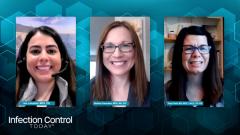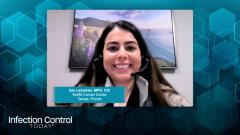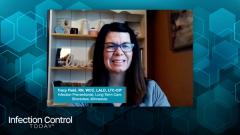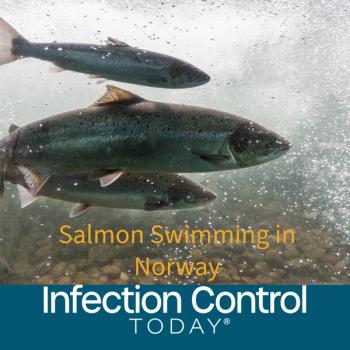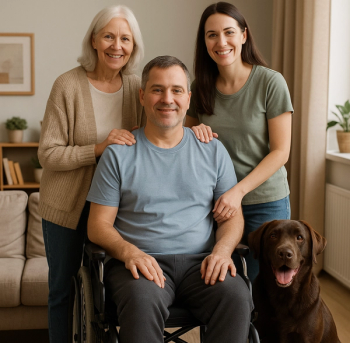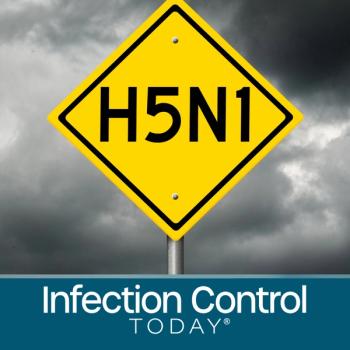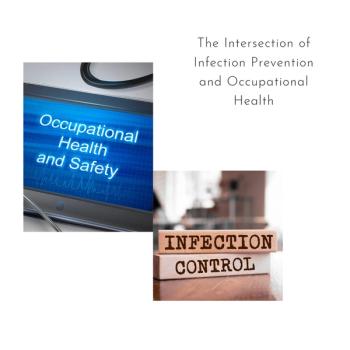
Best Approaches in the Removal of Contaminated PPE
Infection preventionists, Heather Saunders, MPH, RN, CIC; Tracy Field, RN, WCC, LALD, LTC- CIP; and Isis Lamphier, MPH, CIC provide their thoughts on the best approaches regarding the removal of contaminated PPE.
Episodes in this series

Heather Saunders, MPH, RN, CIC: So, when it comes to PPE (personal protective equipment) contamination, this is a little tricky because we always want to assume that our PPE is contaminated. We know that there are certain areas of our personal protective equipment that are likely to be more contaminated than others. For example, with masks, we would assume that the front of the mask is going to be more contaminated than the ear loops or the ties on the back. When we go to touch or adjust our mask, we don't want to adjust by touching the front of that mask because we can assume that it is contaminated. Same with our gowns. With our gowns, we assume that the front of the gown and the sleeves on the front of the gown is most contaminated. Now those ties in the back of the gown, those are going to be the least contaminated portion of the gown. And because of that, we know that we want to avoid touching the front of the gown while we're providing patient or resident care. But what we want to also look for is any breaches in our personal protective equipment. Any areas such as tears or compromised equipment that we might observe or any visual contamination. If we have visual contamination of our PPE, like blood splatter for example, then that's something that we want to change immediately and remove without contaminating our garments, like our scrubs.
Now during the pandemic, unfortunately we ran into the scenario of needing to reuse a lot of different types of personal protective equipment because we were running low on personal protective equipment in all of our supply chains. We developed what we call contingency strategies for the reuse of personal protective equipment. Now that we're back to the supply chain, being able to keep up with supply and demand, we really don't want to be reusing personal protective equipment like we did whenever we were experiencing those supply shortages. However, we do want to be prepared for the possibility of needing to reuse PPE in the future and think through how contaminated our personal protective equipment is, and when it would be appropriate to change that personal protective equipment. So again, anytime we have visible soil, obviously we want to change that personal protective equipment. But CDC recommends for masks at least limiting the number of reuses to no more than five. So, we definitely want to look back at those contingency strategies and compare the amount of personal protective equipment we have available and see where we fall within those different strategies, using the least amount of reuse for our personal protective equipment as possible. Because we really want to get back to the single use that we have been maintaining all along. We must pay in mind that we need to make sure that we have enough personal protective equipment available for our healthcare workers. So, we may need to get into situations again where we're going to have to reuse personal protective equipment. Following CDC guidance is incredibly important. Looking at your institution's availability of personal protective equipment would be really important to determine where you fall in those contingency capacity strategies.
Isis Lamphier, MPH, CIC: It's important that you're careful when you're wearing this PPE that you're not touching other components of your PPE. For example, your gloves. The inner part of your gloves is the most contaminated. You want to be careful what you're touching with that inner glove that you don't further contaminate your mask or your gown that you're wearing. So once you have that PPE on, you want to reduce the amount of times that you're adjusting it and ensure that it's secure prior to stepping into that patient's room.
Heather Saunders, MPH, RN, CIC: That awareness is so important to have.
Transcript edited for clarity
Newsletter
Stay prepared and protected with Infection Control Today's newsletter, delivering essential updates, best practices, and expert insights for infection preventionists.

